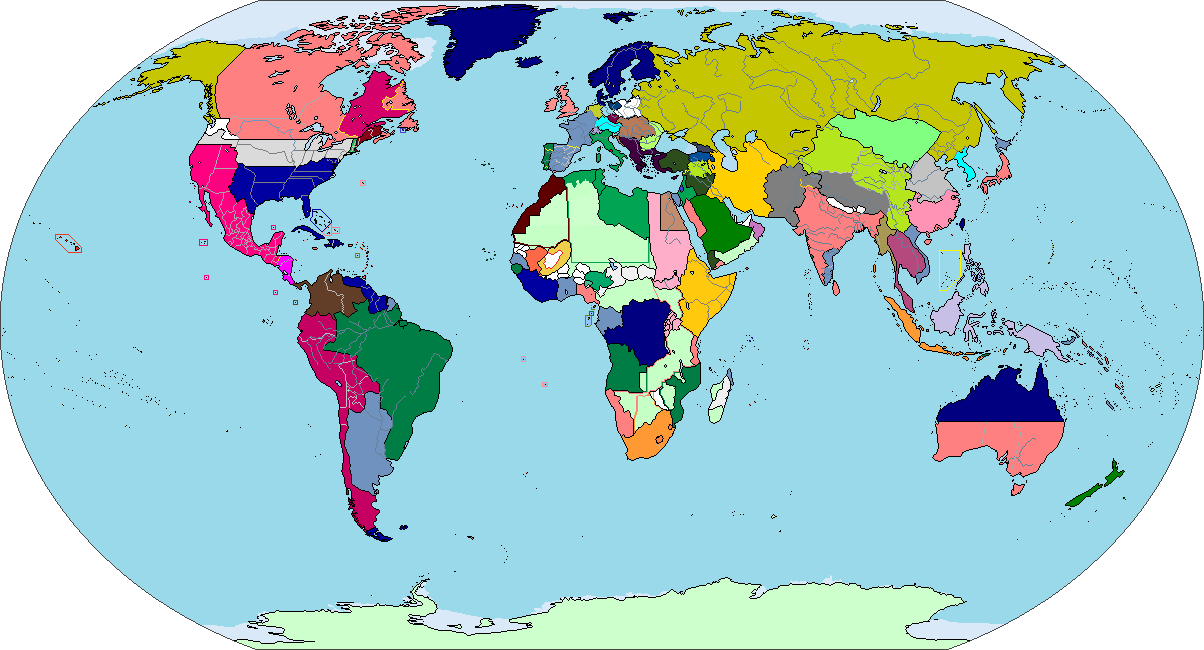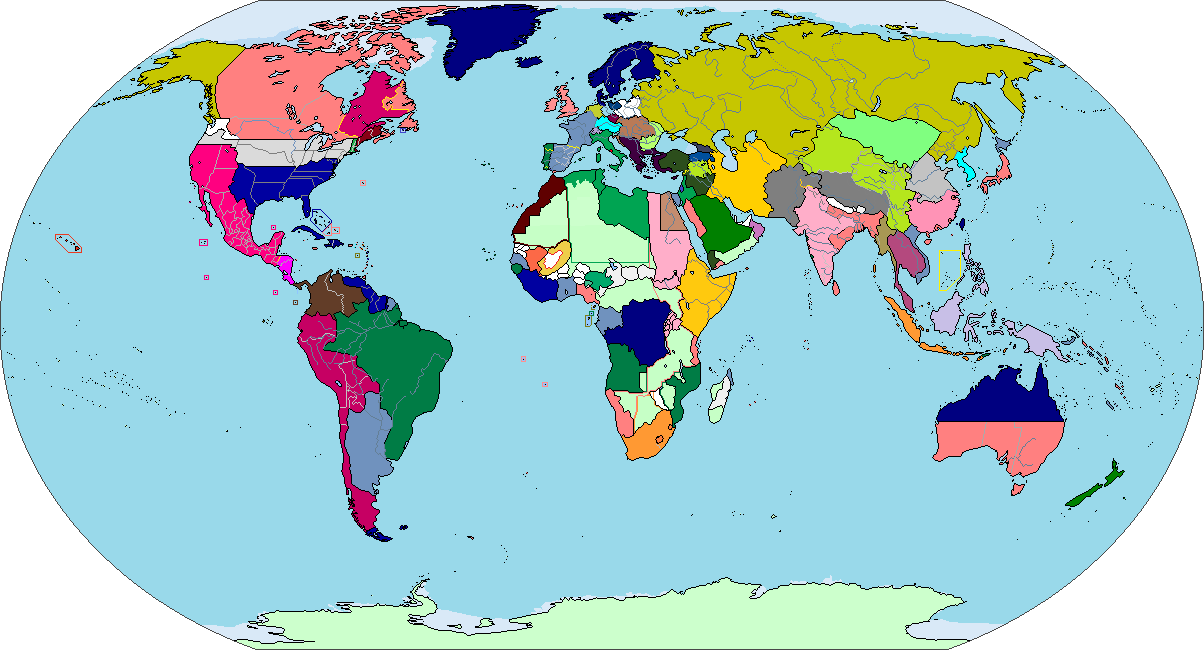Crown Confederation of New Albion, Union of New English States, Empire of Mexico in the 1860's: Whale Wars, and a New Imperialism
To the north of the Federal Republic of America lay the British realms of the Crown Confederation of New Albion and the smallest of the American Republics the Union of New English States. While this area of North America was moving at a notably slower pace than their cousins to the south during the 1860’s there there were things of note happening in the northern part of the continent.
Gambling and Growing the tails of the Crown Confederation of New Albion
For the CCNA the 1860’s were marked by continued struggle to build a unified nation out of a collection of colonies that really didn’t like each other and had their own political goals. The National Government would finally be able to assert its authority as the two National Coalition Parties continued to solidify and seep down into the Commonwealths. This would be seen in the Crown Confederation Defense Service Act that would be passed in 1865. This act would require that each male citizen serve for two years in the military of the Crown Confederation of New Albion upon reaching the age of sixteen. These conscripts would be divided up to meet the needs of the Confederation Army and the Royal Confederation Navy. Following their two years of active service these conscripts would spend the next decade in the active reserves. Active Reserve units would be based in each commonwealth and would gather and drill on the first weekend of each month; after their decade in the active reserves they would simply join their local militia units. In place of the Active Reserve conscripts that were placed in the navy would spend a decade in the Merchant Marine, before being discharged from service. While the Crown Confederation Defense Service Act would increase the CCNA’s military capability that was not its main objective. The act was designed by Senator Robert Wiseman (Tories from Lakeland) to start the process of breaking the citizens viewing themselves as citizens of their Commonwealths and see themselves as citizens of the Confederation. The CCNA Government would also start a massive Railroad build push in 1868 with the passage of the Iron Road Act. The IRA sought to triple the amount of railroad lines in the Confederation by the year 1880. This would cause the Iron and Steel industries to expand to meet the increased demand caused by this act pushing the CCNA’s industrial development along.
As the Decade drew to a close the First Peoples Nation would see its membership increased as the surviving tribes from the Plains War with the Federal Republic of America flet north seeking safety form the The welcoming of these new nations into the FPN would serve to worsen the relations between Britain and the FRA following the Yellowstone incursion by General Custer. However as cooler heads would prevail in London and Hamilton war would be averted if just by the skin of their teeth. With the government of the FRA issuing a formal apology. Instead the FPN would spend the decade continuing to scour the orphanages of Europe and Asia taking children and bringing them back to be raised in the culture of the tribes of the FPN. They would also start sending scouts abroad to find a replacement for the buffalo which was now extinct, along with its European cousin.
The Union of New English States and the Whale Wars
While their Royalist brothers were still adjusting to being swallowed whole by the CCNA. The UNES aka the enlarged Republic of Vermont had moved past the early stages of restoring the Republic form of Government to the bulk of New England to forming an actual country. The political mood in Adams was generally good natured. The Republicans held the presidency and control of the Congress. The Green Party made up a sizable minority but had yet to win over enough of the population of the new states to break the Republican majority. The CCNA’s conscription act, something that most expected to draw the attention of the politicians in Adams actually didn't. All the UNES did was to reinstate its own conscription law that it had allowed to expire following the end of Hostilities. No, the politicians in Adams' eyes were drawn to the sea where a drama was unfolding. Known as the “Whale Wars” in the newspapers and along the harbor fronts, contact between UNES whalers and those from the Commonwealth of New England and Occasionally the Irish were becoming increasingly hostile to the point where ships had been burned and crews killed. For a change no one in Adams, Richardsburg, or New Dublin wanted to go to war over this issue but all wanted these incidents to stop. So on March 7,1865 delegates from all of the countries that practiced whaling (which was all the American, and European Nations that had coast lines would attend the Congress of Madrid to settle the whaling issue. This would create the Madrid Treaty on Whaling of 1865. This Congress would establish rules to govern whaling, as well as an international council on Whaling that would govern the whaling industry in the future. Each member nation would commit ships to form the Whaling Taskforce that the ICW would use to enforce these laws.
Mexico
On February 28, 1863 70 year old Emperor Christobal de Montazuma dies and his son 45 year old Crown Prince Juan Carlosand his wife Princess Shou'an becomes Emperor and Empress of Mexico. Their eldest son Antonio becomes Crown Prince. They will be officially crowned on August 15,1863. The New Emperor is a member of the generation that fought and died in the Commonwealth-Mexican War back in the 1840’s. As such the new emperor is far from a war hawk. However many in the Parliament are shocked then when one of his first actions is to ask the Parliament for the largest defense spending bill in the last twenty years. However he is quick to explain his reasoning why. Since the end of the war Mexico has spent the bare minimum on the army and navy and both are now completely outclassed by their potential enemies. Mexico’s army is equipped with single shot breech loading rifles and her fleet is made up of wooden hulled warships. After much debate the Parliament agrees with the Emperor and the Military Restoration Act of 1866 will be passed.
The Military Restoration Act of 1866 provides funds for the adoption of modern equipment for the Army and Marine formations. It also lays out a 15 year building plan that will see the Mexican Armada completely do away with wooden hulled ships in favor of Iron (and later steel) ships. The Armada will place its first order for Ironclad battleships the next year; these were a class of four; 5,000 ton central battery Ironclads based upon the British Ironclad HMS Penelope that had been laid down two years earlier. They were named after the current Emperor’s father, Emperor Christobal. While The Ironclad fleet was being to be built Emperor Juan Carlos would dispatch Admiral Carlos Jesus de Guadalahara lead a squadron of 48 ships and a force of 60,000 soldiers under the command of Prince Roberto Phillip (Emperor Juan Carlos’s 3rd son) to the Hawaiian Islands to establish a Mexican Presence on those Islands.
The Fleet would arrive off of the Hawaiian Islands on March 17,1866. Once there The Prince would lead a short and bloody conquest of the Island Kingdom. During the course of this conquest he would see to it that every male member of the royal family was executed. After several popular revolts were extinguished by the Mexican troops Hawaii would be officially declared under Mexican Protection on May 1,1866. Roberto would seek out the one surviving member of the Hawaiian line of succession Prince Victoria(1) who was just 17 years old. After several days of negotiating with her they would announce their engagement. Roberto would ensure that his father recognized Victoria as the heir apparent to the throne of Hawaii. In exchange for this she would marry Robert and he would serve as her equal partner and co-ruler. A week later they were married by a catholic Priest in the Kawaiahaʻo Church.
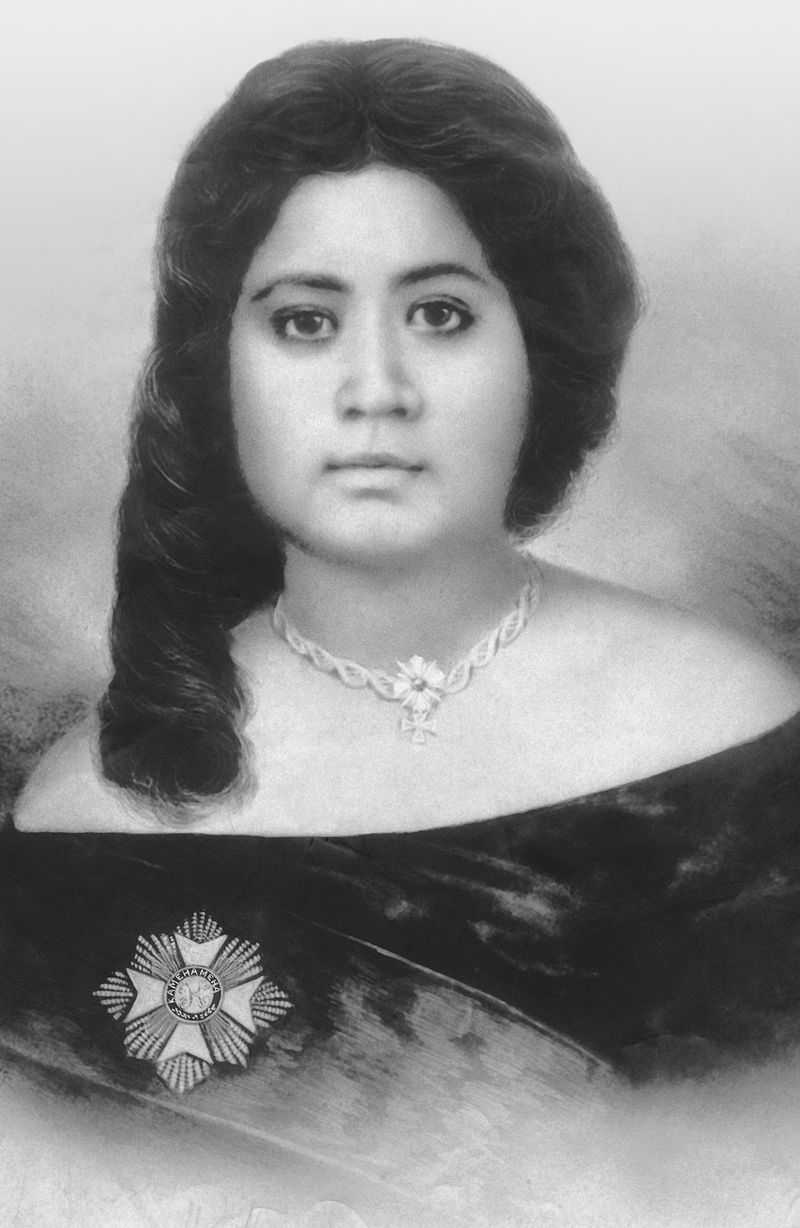
Princess Victoria on her Coronation day 17 years old
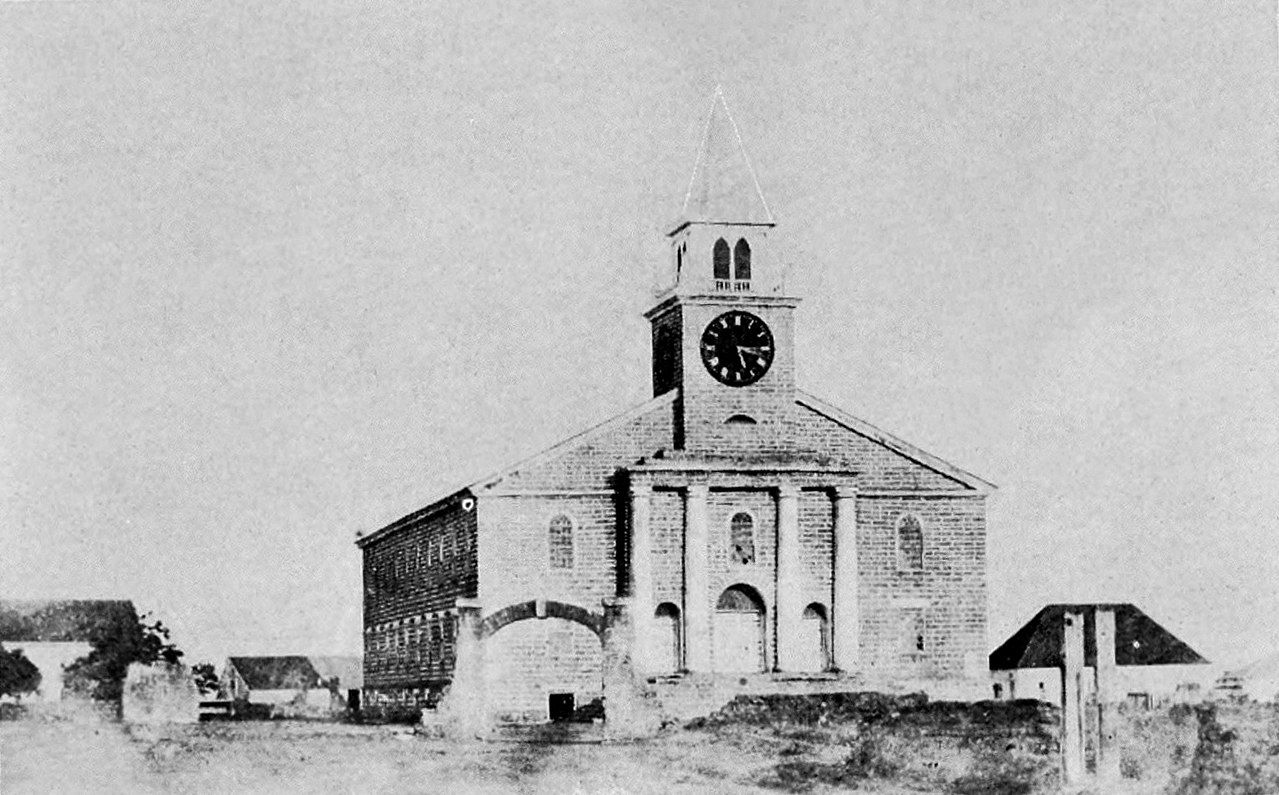
Kawaiahaʻo Church in 1866
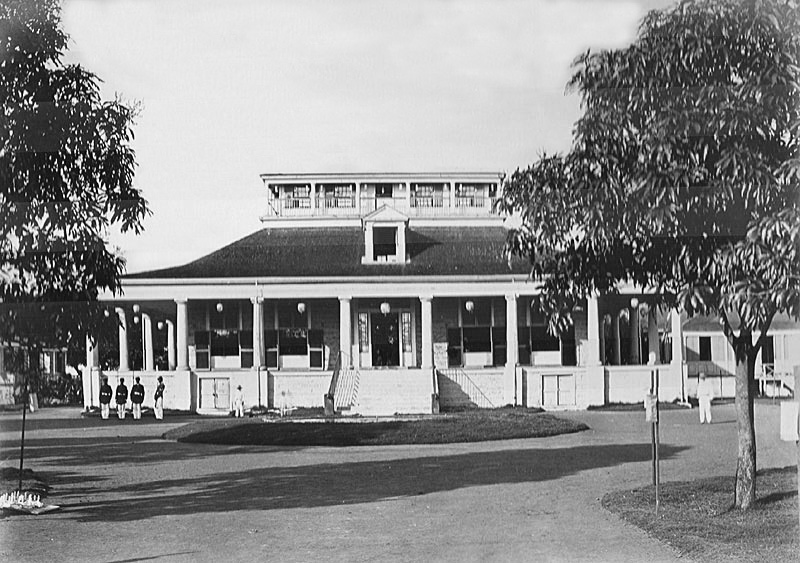
The Iolani Place in 1866
Two months later they would be crowned King and King of Hawaii in the ʻIolani Palace. As his first act as King Roberto would grant Mexico a five hundred year agreement for basing rights at Pearl Harbor, and the ability to station up to 100,000 soldiers in the Hawaiian Islands. In return his father Emperor Juan Carlos ensure the Roberto would be the commander of all Mexican forces stationed in Hawaii and Mexico would assist Hawaii in the training of a modern army and navy.
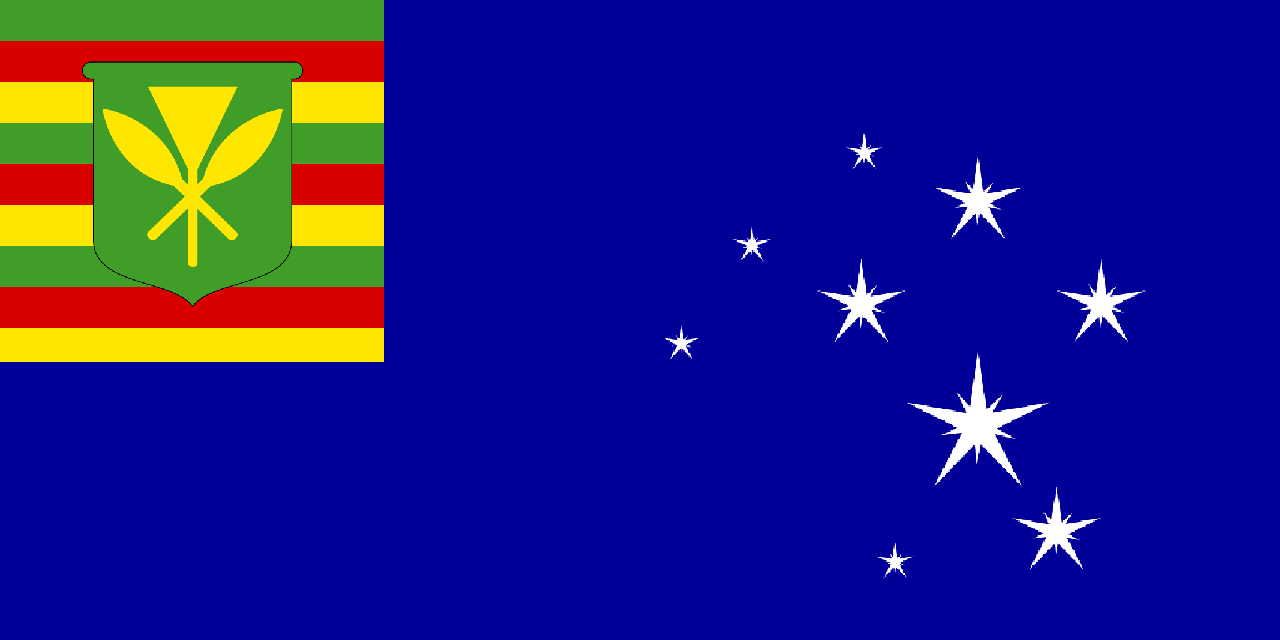
Flag of Hawaii 1867
Gambling and Growing the tails of the Crown Confederation of New Albion
For the CCNA the 1860’s were marked by continued struggle to build a unified nation out of a collection of colonies that really didn’t like each other and had their own political goals. The National Government would finally be able to assert its authority as the two National Coalition Parties continued to solidify and seep down into the Commonwealths. This would be seen in the Crown Confederation Defense Service Act that would be passed in 1865. This act would require that each male citizen serve for two years in the military of the Crown Confederation of New Albion upon reaching the age of sixteen. These conscripts would be divided up to meet the needs of the Confederation Army and the Royal Confederation Navy. Following their two years of active service these conscripts would spend the next decade in the active reserves. Active Reserve units would be based in each commonwealth and would gather and drill on the first weekend of each month; after their decade in the active reserves they would simply join their local militia units. In place of the Active Reserve conscripts that were placed in the navy would spend a decade in the Merchant Marine, before being discharged from service. While the Crown Confederation Defense Service Act would increase the CCNA’s military capability that was not its main objective. The act was designed by Senator Robert Wiseman (Tories from Lakeland) to start the process of breaking the citizens viewing themselves as citizens of their Commonwealths and see themselves as citizens of the Confederation. The CCNA Government would also start a massive Railroad build push in 1868 with the passage of the Iron Road Act. The IRA sought to triple the amount of railroad lines in the Confederation by the year 1880. This would cause the Iron and Steel industries to expand to meet the increased demand caused by this act pushing the CCNA’s industrial development along.
As the Decade drew to a close the First Peoples Nation would see its membership increased as the surviving tribes from the Plains War with the Federal Republic of America flet north seeking safety form the The welcoming of these new nations into the FPN would serve to worsen the relations between Britain and the FRA following the Yellowstone incursion by General Custer. However as cooler heads would prevail in London and Hamilton war would be averted if just by the skin of their teeth. With the government of the FRA issuing a formal apology. Instead the FPN would spend the decade continuing to scour the orphanages of Europe and Asia taking children and bringing them back to be raised in the culture of the tribes of the FPN. They would also start sending scouts abroad to find a replacement for the buffalo which was now extinct, along with its European cousin.
The Union of New English States and the Whale Wars
While their Royalist brothers were still adjusting to being swallowed whole by the CCNA. The UNES aka the enlarged Republic of Vermont had moved past the early stages of restoring the Republic form of Government to the bulk of New England to forming an actual country. The political mood in Adams was generally good natured. The Republicans held the presidency and control of the Congress. The Green Party made up a sizable minority but had yet to win over enough of the population of the new states to break the Republican majority. The CCNA’s conscription act, something that most expected to draw the attention of the politicians in Adams actually didn't. All the UNES did was to reinstate its own conscription law that it had allowed to expire following the end of Hostilities. No, the politicians in Adams' eyes were drawn to the sea where a drama was unfolding. Known as the “Whale Wars” in the newspapers and along the harbor fronts, contact between UNES whalers and those from the Commonwealth of New England and Occasionally the Irish were becoming increasingly hostile to the point where ships had been burned and crews killed. For a change no one in Adams, Richardsburg, or New Dublin wanted to go to war over this issue but all wanted these incidents to stop. So on March 7,1865 delegates from all of the countries that practiced whaling (which was all the American, and European Nations that had coast lines would attend the Congress of Madrid to settle the whaling issue. This would create the Madrid Treaty on Whaling of 1865. This Congress would establish rules to govern whaling, as well as an international council on Whaling that would govern the whaling industry in the future. Each member nation would commit ships to form the Whaling Taskforce that the ICW would use to enforce these laws.
Mexico
On February 28, 1863 70 year old Emperor Christobal de Montazuma dies and his son 45 year old Crown Prince Juan Carlosand his wife Princess Shou'an becomes Emperor and Empress of Mexico. Their eldest son Antonio becomes Crown Prince. They will be officially crowned on August 15,1863. The New Emperor is a member of the generation that fought and died in the Commonwealth-Mexican War back in the 1840’s. As such the new emperor is far from a war hawk. However many in the Parliament are shocked then when one of his first actions is to ask the Parliament for the largest defense spending bill in the last twenty years. However he is quick to explain his reasoning why. Since the end of the war Mexico has spent the bare minimum on the army and navy and both are now completely outclassed by their potential enemies. Mexico’s army is equipped with single shot breech loading rifles and her fleet is made up of wooden hulled warships. After much debate the Parliament agrees with the Emperor and the Military Restoration Act of 1866 will be passed.
The Military Restoration Act of 1866 provides funds for the adoption of modern equipment for the Army and Marine formations. It also lays out a 15 year building plan that will see the Mexican Armada completely do away with wooden hulled ships in favor of Iron (and later steel) ships. The Armada will place its first order for Ironclad battleships the next year; these were a class of four; 5,000 ton central battery Ironclads based upon the British Ironclad HMS Penelope that had been laid down two years earlier. They were named after the current Emperor’s father, Emperor Christobal. While The Ironclad fleet was being to be built Emperor Juan Carlos would dispatch Admiral Carlos Jesus de Guadalahara lead a squadron of 48 ships and a force of 60,000 soldiers under the command of Prince Roberto Phillip (Emperor Juan Carlos’s 3rd son) to the Hawaiian Islands to establish a Mexican Presence on those Islands.
The Fleet would arrive off of the Hawaiian Islands on March 17,1866. Once there The Prince would lead a short and bloody conquest of the Island Kingdom. During the course of this conquest he would see to it that every male member of the royal family was executed. After several popular revolts were extinguished by the Mexican troops Hawaii would be officially declared under Mexican Protection on May 1,1866. Roberto would seek out the one surviving member of the Hawaiian line of succession Prince Victoria(1) who was just 17 years old. After several days of negotiating with her they would announce their engagement. Roberto would ensure that his father recognized Victoria as the heir apparent to the throne of Hawaii. In exchange for this she would marry Robert and he would serve as her equal partner and co-ruler. A week later they were married by a catholic Priest in the Kawaiahaʻo Church.
Princess Victoria on her Coronation day 17 years old
Kawaiahaʻo Church in 1866
The Iolani Place in 1866
Two months later they would be crowned King and King of Hawaii in the ʻIolani Palace. As his first act as King Roberto would grant Mexico a five hundred year agreement for basing rights at Pearl Harbor, and the ability to station up to 100,000 soldiers in the Hawaiian Islands. In return his father Emperor Juan Carlos ensure the Roberto would be the commander of all Mexican forces stationed in Hawaii and Mexico would assist Hawaii in the training of a modern army and navy.
Flag of Hawaii 1867
- Younger than the OTL Victoria but I’m using the otl picture
